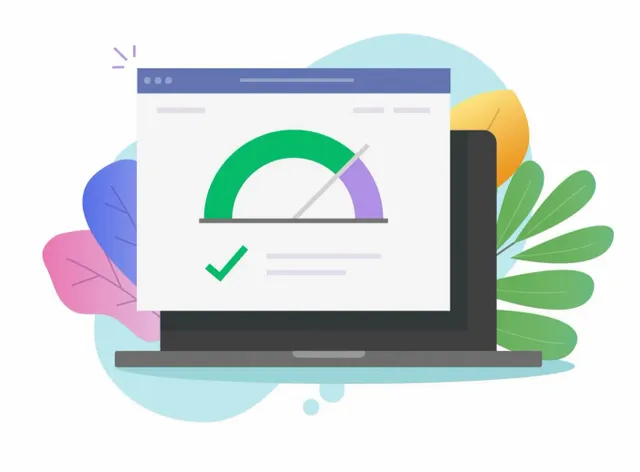How To Optimize Your Website's Load Time For Better User Experience

You want your website to be fast and efficient, both for yourself and your users. Speed is a huge factor in the user experience and can even impact your business's success. When a website takes too long to load, visitors often become discouraged and may not return. Fortunately, there are plenty of ways to optimize your website’s loading time for a better user experience. In this article, we will discuss the various methods that you can use to improve your website’s loading time.
Improve Server Response Time
The first step to improving server response time is to minimize the number of requests made by the browser. This can be done by reducing the size of files and images, using CSS for styling instead of images, combining multiple scripts into one file and using a content delivery network (CDN). Additionally, optimizing your database queries can also help speed up response time. To do this, you should make sure that you are only retrieving the data that is needed instead of full tables or objects. Furthermore, it’s important to use caching techniques such as page caching and object caching as these will store copies of your web pages so they can be served faster than if they were generated from scratch for each request.
Compress Files and Images
Compressing files and images is an effective way to reduce the size of your website's content without sacrificing quality. This helps speed up load times, resulting in a better user experience. The most common ways to compress files and images are through lossy compression algorithms or by using software such as GZip.
Lossy compression algorithms work by reducing the amount of data stored in a file or image, resulting in smaller file sizes with minimal losses in quality. This works well for large images or audio/video files that contain redundant information that can be safely removed from the data set without impacting overall quality. GZip on the other hand is an open-source software used for compressing files and images into archives which often results in even greater reductions in file size, although this usually requires more effort and technical knowledge to do so properly so you can Contact WebDesignSTpaul
to learn more about how to compress your site's content.
Reduce Redirects and Requests
To reduce redirects, look for unnecessary redirects that may be present in your current setup and remove them. Additionally, always use relative URLs instead of absolute ones whenever possible as it reduces one extra request. This includes images, CSS files, scripts etc., which should all have relative URLs pointing to them instead of absolute ones.
When reducing requests, ensure all components are optimized for faster loading times without compromising on quality. Image size should be reduced without degrading the image quality and caches should be enabled on your server so that static content like images can be served quickly from local memory rather than having to download it from the server every time it is requested. Also, consider using minified versions of JavaScript and CSS files which helps reduce their file sizes significantly with no visible effect on website performance or user experience.
Leverage Browser Caching
Leverage Browser Caching is a method of caching static resources such as images, JavaScript, and CSS on the user's browser. This allows for quicker loading times and improved performance when a user visits multiple pages within your website. By leveraging browser caching, you can significantly reduce the amount of data that must be downloaded each time a user visits a new page. Leveraging browser caching also reduces the number of requests to your web server, resulting in less load on your server and better overall performance. To leverage browser caching, you need to specify how long each element should be cached in the HTTP response headers or by using other methods such as meta tags or cookie settings.
Use Lightweight Themes and Plugins
Lightweight themes and plugins are essential to ensuring a fast website. If you want Web design
and select a theme and plugins, it is important to look for ones that have been designed with speed in mind. This means low-code bloat, reduced file sizes and optimized code. Using lightweight themes and plugins helps limit the amount of time needed to render web pages and can significantly reduce page load times and improve user experience.
When choosing a theme or plugin, always opt for one that is well-coded, regularly updated with security patches, has good reviews from users who have used it before you, and offers support if needed. Additionally, look out for features like caching or minifying of code which can help improve website performance even further. Finally, make sure you only keep active the plugins that are necessary—deactivate any unnecessary ones as they can increase loading times without providing much value in return.
Conclusion
User experience is paramount to any website that is trying to attract and retain visitors. A good user experience will increase customer satisfaction, reduce bounce rates and ultimately lead to more conversions. When it comes to optimizing your website for a better user experience, the load time of your website needs to be taken into account. Load time can be optimized by reducing server response times, minifying HTML, CSS and JavaScript files and compressing images as well as other techniques such as lazy loading and caching which can help keep page loading times low. All of these techniques work together to create an enjoyable user experience that will have users coming back multiple times.
Finally, it's important to remember that user experience isn't just about load time; there are countless other factors at play such as ease of navigation, content quality and visual appeal which all need to be considered when designing a website. By taking into account all aspects of the user experience you can ensure your website offers an enjoyable browsing experience every time they visit your site.